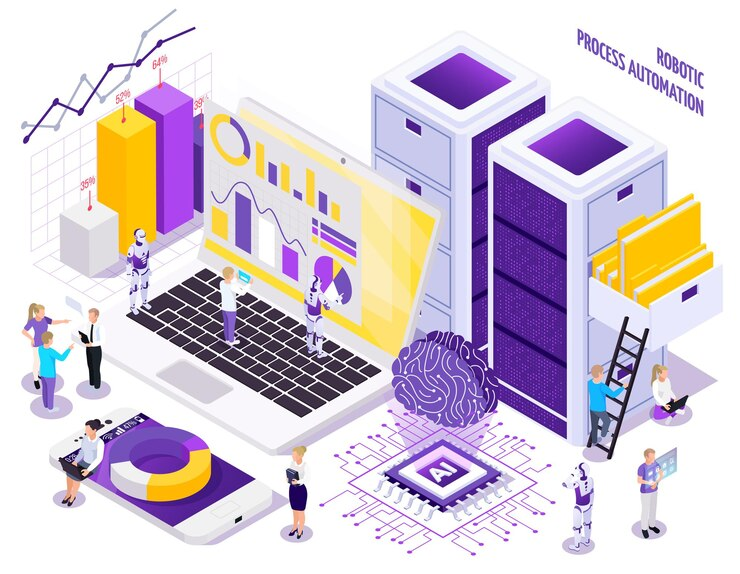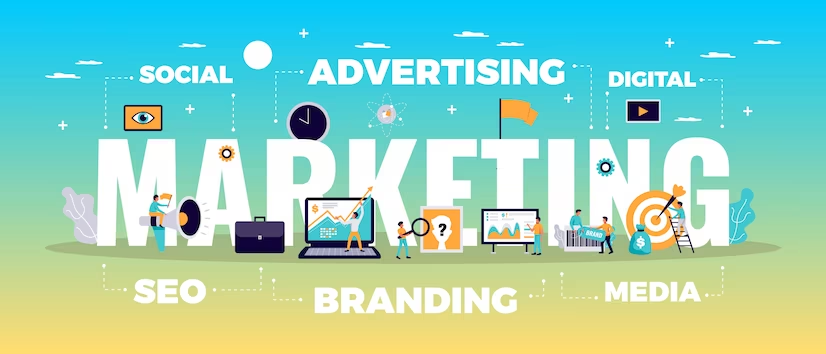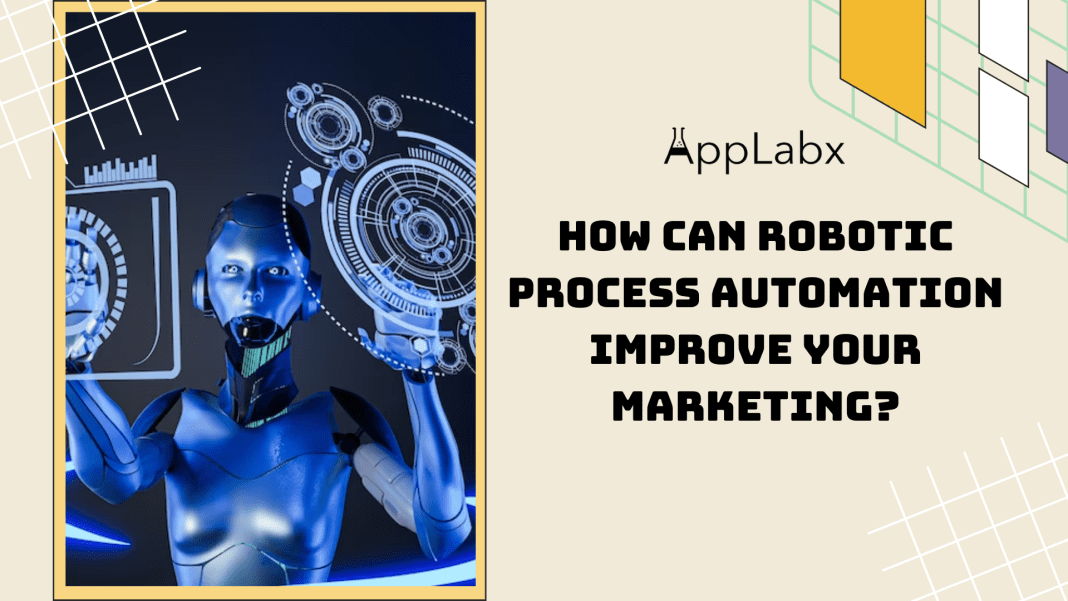Key Takeaways
- Efficiency Amplified: Explore how Robotic Process Automation streamlines marketing tasks, reducing manual efforts, and accelerating campaign deployment for unparalleled efficiency.
- Precision in Personalization: Unlock the power of hyper-personalization as RPA leverages data insights to tailor marketing messages at an individual level, creating impactful and targeted customer experiences.
- Future-Ready Strategies: Embrace the synergy of RPA and AI, witnessing a transformative shift in marketing dynamics. Stay ahead with predictive analytics and adapt to evolving trends, ensuring your marketing strategies are future-proof.
In the ever-evolving landscape of digital marketing, staying ahead of the curve is not merely a desire but a necessity.
As businesses grapple with the increasing complexity of marketing strategies, the integration of cutting-edge technologies becomes paramount.
Enter Robotic Process Automation (RPA), a revolutionary force reshaping the contours of marketing efficiency and effectiveness.
In this comprehensive exploration, we delve into the intricate interplay between Robotic Process Automation and the dynamic realm of marketing.
From its fundamental definition to the transformative potential it carries, this blog aims to be your guide through the intricate maze of possibilities that RPA unfurls within the marketing spectrum.

Unveiling Robotic Process Automation (RPA) in Marketing: A Paradigm Shift
At its core, RPA represents the marriage of advanced robotics and artificial intelligence (AI) to automate mundane, repetitive tasks, liberating human resources for more strategic, creative endeavors.
As marketing endeavors grow in scale and complexity, the need for a streamlined approach becomes increasingly evident.
Robotic Process Automation steps into this arena as a formidable ally, wielding the power to optimize workflows, enhance data accuracy, and revolutionize customer interactions.
The Crucial Role of RPA in Marketing Efficiency and Time Savings
The relentless pace of the digital age demands unparalleled efficiency, and RPA emerges as the catalyst for transformative change.
By automating repetitive tasks that traditionally consumed significant time and resources, marketing professionals can redirect their focus toward strategic planning, creative ideation, and customer engagement.
This newfound efficiency not only accelerates campaign deployment but also provides the agility necessary to adapt to the ever-shifting landscape of consumer behavior.
Precision in Action: Enhanced Data Accuracy through RPA
In the realm of marketing, precision is non-negotiable.
A single data discrepancy can cascade into a series of errors, impacting the entire marketing strategy.
RPA’s meticulous approach to data management ensures that human errors are minimized, leading to improved data quality and consistency.
The ramifications extend beyond mere accuracy – they pave the way for data-driven insights that fuel targeted marketing efforts and elevate the overall effectiveness of campaigns.
Unlocking the Power of Customer Segmentation through RPA
As businesses navigate the intricate web of consumer preferences, personalized marketing emerges as a cornerstone for success. RPA, with its ability to process vast amounts of data in real-time, becomes the linchpin for effective customer segmentation.
This, in turn, facilitates targeted marketing initiatives, enabling businesses to deliver personalized content, offers, and experiences at scale. The era of generic outreach gives way to a more nuanced and responsive approach, fostering deeper connections with the audience.
Seamless Coordination: RPA’s Role in Multi-Channel Marketing Automation
Marketing campaigns seldom operate in isolation; they span across a multitude of channels, each requiring careful orchestration. RPA seamlessly integrates with various marketing channels, ensuring coordinated and synchronized efforts.
From social media to email marketing, RPA’s automation capabilities transcend silos, creating a harmonious symphony of marketing initiatives that resonate with diverse audiences across different platforms.
In the subsequent sections of this in-depth exploration, we will unravel specific use cases of RPA in marketing, addressing the challenges associated with implementation, and envisioning future trends that promise to redefine the marketing landscape.
Join us on this enlightening journey as we unlock the full potential of Robotic Process Automation in shaping the future of marketing strategy and execution.
Welcome to a paradigm where efficiency meets innovation, and marketing evolves into a dynamic force driven by the precision of automation.
But, before we venture further, we like to share who we are and what we do.
About AppLabx
From developing a solid marketing plan to creating compelling content, optimizing for search engines, leveraging social media, and utilizing paid advertising, AppLabx offers a comprehensive suite of digital marketing services designed to drive growth and profitability for your business.
AppLabx is well known for helping companies and startups use digital marketing to drive web traffic to their websites and web apps.
At AppLabx, we understand that no two businesses are alike. That’s why we take a personalized approach to every project, working closely with our clients to understand their unique needs and goals, and developing customized strategies to help them achieve success.
If you need a digital consultation, then send in an inquiry here.
How can Robotic Process Automation improve your Marketing?
- Key Benefits of Robotic Process Automation in Marketing
- Use Cases of RPA in Marketing
- Overcoming Challenges with RPA Implementation
- Future Trends in RPA and Marketing
- Tips for Implementing RPA in Marketing
1. Key Benefits of Robotic Process Automation in Marketing
In the relentless pursuit of marketing excellence, businesses are increasingly turning to Robotic Process Automation (RPA) to unlock a myriad of advantages.
From operational efficiency to enhanced customer engagement, the impact of RPA on marketing is transformative.

Efficiency and Time Savings
Automated Repetitive Tasks
- RPA eliminates the drudgery of repetitive tasks, such as data entry, form submissions, and report generation.
- Example: Consider the manual process of updating customer records across multiple platforms. With RPA, this can be automated, reducing the time spent on data maintenance and allowing marketing teams to focus on strategic initiatives.

Streamlined Workflow Processes
- RPA facilitates the seamless flow of data and tasks across various marketing functions. This streamlining of workflows not only reduces bottlenecks but also ensures a faster time-to-market for campaigns.
- Example: In email marketing, RPA can automate the process of campaign scheduling, content creation, and A/B testing, enabling marketing teams to execute campaigns with precision and speed.
Enhanced Data Accuracy
Reduction of Human Errors
Human errors in data entry and processing can have profound implications for marketing campaigns.
RPA significantly reduces the risk of errors, ensuring data accuracy and reliability.
Improved Data Quality and Consistency
- RPA ensures consistency in data processing, mitigating the challenges associated with disparate data sources. This consistency lays the foundation for more reliable analytics and decision-making.
- Example: For a multinational company managing diverse customer databases, RPA can standardize data formats, ensuring uniformity and enhancing the accuracy of customer segmentation for targeted marketing.

Improved Customer Segmentation
Data-Driven Insights for Targeted Marketing
- RPA empowers marketing teams with data-driven insights, enabling the creation of more granular customer segments. This, in turn, facilitates targeted and personalized marketing efforts.
- Example: An e-commerce company leveraging RPA can analyze customer purchase histories, browsing behavior, and preferences to create finely-tuned segments for personalized promotions and product recommendations.

Personalization at Scale
- With RPA, businesses can achieve personalization at scale, delivering customized content and experiences to a large audience. According to a report, 80% of consumers are more likely to make a purchase when brands offer personalized experiences.
- Example: RPA can automate the process of tailoring email content based on customer behaviour, ensuring that each communication resonates with individual preferences.
Multi-Channel Marketing Automation
Integration with Various Marketing Channels
- RPA breaks down silos by seamlessly integrating with diverse marketing channels, including social media, email, and content marketing. This integration ensures cohesive and synchronized marketing efforts.
- Example: In social media management, RPA can automate the scheduling of posts, monitor engagement metrics, and even respond to customer inquiries, providing a unified approach to social media marketing.

Seamless Coordination Across Platforms
- Coordinated efforts across different marketing platforms become achievable through RPA, fostering consistency in messaging and branding.
- Example: Consider a scenario where a customer engages with a brand through multiple channels. RPA ensures that the customer receives a consistent experience, whether through email, social media, or the company’s website.

2. Use Cases of RPA in Marketing
Robotic Process Automation (RPA) in marketing is not just a theoretical concept; it’s a transformative force reshaping how campaigns are conceived, executed, and optimized.
Let’s delve into specific use cases where RPA demonstrates its prowess, making marketing processes more efficient, targeted, and responsive.

Email Marketing Automation
Automated Email Campaigns
- RPA plays a pivotal role in automating the end-to-end process of email marketing campaigns. From list segmentation to content personalization, RPA ensures campaigns are launched with precision and timeliness.
- Example: Marketing teams can use RPA to automate the process of sending targeted promotional emails based on customer behaviour.
Dynamic Content Creation
- RPA enables dynamic content creation by pulling real-time data into emails. This ensures that the content remains relevant and up-to-date, maximizing engagement.
- Example: An e-commerce platform leveraging RPA can dynamically update product recommendations in emails based on the user’s recent browsing and purchase history.
Social Media Management
Automated Posting Schedules
- RPA can automate the scheduling of social media posts across platforms. This ensures a consistent and strategic presence, even during non-business hours.
- Example: RPA can analyze engagement data and automate posting schedules for maximum visibility and impact.
Social Listening and Sentiment Analysis
RPA tools can monitor social media channels for brand mentions and analyze sentiment. This real-time feedback loop allows marketing teams to respond promptly to customer feedback.

Data Analysis and Reporting
Automated Data Extraction
RPA excels in automating the extraction of data from various sources, consolidating information for comprehensive analytics and reporting.
Generation of Marketing Performance Reports
RPA streamlines the generation of marketing performance reports by automating data processing and visualization, providing real-time insights for data-driven decision-making.
3. Overcoming Challenges with RPA Implementation
While the promises of Robotic Process Automation (RPA) in marketing are substantial, successful implementation is not without its hurdles.
Addressing these challenges head-on is crucial for maximizing the benefits of RPA and ensuring seamless integration into marketing workflows.

Integration with Existing Marketing Systems
Compatibility Considerations
- Challenge: Many marketing teams use a variety of tools and platforms. Ensuring that RPA seamlessly integrates with existing systems is a significant challenge.
- Solution: Conduct a thorough compatibility analysis before implementation. Choose an RPA solution that offers robust integration capabilities and supports common marketing software.
Best Practices for Integration
- Challenge: Without proper integration practices, there’s a risk of data silos and inefficiencies.
- Solution: Adopt best practices such as API-based integration and real-time data synchronization. This ensures a cohesive ecosystem where RPA seamlessly interacts with existing marketing tools.
Security and Compliance
Ensuring Data Security
- Challenge: As RPA involves handling sensitive data, security concerns are paramount. Unauthorized access and data breaches are potential risks.
- Solution: Implement encryption protocols, access controls, and regular security audits. Choose RPA vendors with robust security certifications.
- Example: Data security concerns are among the top obstacles to RPA adoption, reinforcing the need for stringent security measures.
Compliance with Industry Regulations
- Challenge: Marketing activities often involve compliance with industry-specific regulations (e.g., GDPR, HIPAA), and RPA must adhere to these standards.
- Solution: Implement RPA in alignment with industry regulations. Regularly update processes to comply with evolving legal requirements.
- Example: The introduction of GDPR prompted marketing teams to enhance RPA implementations to ensure adherence to stringent data protection requirements.
Employee Training and Change Management
Training Staff for RPA Adoption
- Challenge: Resistance to change and lack of expertise among the marketing team can impede successful RPA adoption.
- Solution: Provide comprehensive training programs to upskill the workforce. Foster a culture of continuous learning and demonstrate the benefits of RPA through tangible success stories.
Managing Organizational Change
- Challenge: RPA implementation shifts workflows, and managing this change is critical for employee buy-in.
- Solution: Communicate transparently about the benefits of RPA, involve employees in the implementation process, and address concerns promptly. Create a change management plan to guide the transition.
In the next section, we’ll explore the future trends in RPA and marketing, shedding light on the evolving landscape and opportunities for innovation.
4. Future Trends in RPA and Marketing
The landscape of marketing is ever-evolving, and the integration of Robotic Process Automation (RPA) continues to shape the future trajectory of the industry.
Let’s delve into the emerging trends that are poised to redefine how RPA intersects with marketing strategies, offering new opportunities for efficiency, personalization, and strategic decision-making.

Artificial Intelligence (AI) Integration
Advancements in AI-Powered RPA
- Trend: The convergence of RPA and AI is a game-changer. AI-driven RPA can enhance decision-making processes, allowing marketing teams to leverage predictive analytics and machine learning algorithms for more sophisticated insights.
- Example: An e-commerce giant employing AI-integrated RPA can predict customer preferences with greater accuracy, leading to more targeted marketing campaigns and increased conversion rates.

Hyper-Personalization
Tailoring Marketing Messages at an Individual Level
- Trend: Hyper-personalization takes personalization to the next level by tailoring marketing messages and content at an individual level. RPA facilitates the processing of vast datasets to create highly targeted and relevant communications.
- Implication: A study found that 66% of consumers expect companies to understand their unique needs and expectations.
- Example: RPA can analyze a customer’s historical interactions, preferences, and online behaviour to deliver a personalized shopping experience, resulting in increased customer satisfaction and loyalty.
Predictive Analytics for Marketing
Utilizing RPA for Predictive Modeling
- Trend: Predictive analytics involves using historical data, machine learning, and statistical algorithms to identify future trends. RPA plays a pivotal role in automating the process of gathering and analyzing data for predictive modeling.
- Example: RPA can analyze past campaign performance, customer behavior, and market trends to predict the success of future marketing initiatives, enabling proactive decision-making.
5. Tips for Implementing RPA in Marketing
The successful integration of Robotic Process Automation (RPA) into marketing operations demands a strategic approach, meticulous planning, and a keen understanding of organizational dynamics.
Here are crucial tips to guide businesses through the implementation of RPA in marketing, ensuring a seamless transition and maximizing the transformative potential of this technology.

Identify Suitable Processes for Automation
Conduct a Process Audit
- Tip: Before diving into RPA implementation, conduct a thorough audit of marketing processes to identify tasks that are repetitive, rule-based, and time-consuming.
- Benefit: According to a survey, a tremendous 95% of organizations that have implemented robotic process automation (RPA) say the technology has improved productivity.
- Example: Analyze the process of lead scoring in marketing. If it involves repetitive data entry tasks or follows a rule-based scoring system, it could be a prime candidate for RPA automation.
Collaborate with Cross-Functional Teams
Involve Stakeholders from Different Departments
- Tip: Collaboration is key. Involve team members from marketing, IT, and operations to ensure a holistic understanding of the processes being automated.
- Example: When implementing RPA for email campaign automation, collaborate with the IT team to ensure seamless integration with the CRM system and align with marketing goals.
Continuous Monitoring and Optimization
Establish Key Performance Indicators (KPIs)
- Tip: Define clear KPIs to measure the success of RPA implementation. This could include metrics such as time saved, error reduction, and improvement in campaign deployment speed.
- Example: If the goal is to reduce the time spent on data entry for customer segmentation, a KPI could be a 30% reduction in manual effort within the first quarter.
Address Employee Training and Change Management
Invest in Training Programs
- Tip: Equip employees with the skills needed to adapt to the changes brought about by RPA. Training programs should cover both technical aspects and the broader implications for their roles.
- Example: Conduct workshops on the use of the RPA tool and its impact on daily tasks. This empowers employees to embrace the technology with confidence.
Leverage RPA for Data-Driven Decision Making
Integrate RPA with Analytics Platforms
- Tip: Integrate RPA with analytics tools to enable data-driven decision-making in marketing. RPA can automate the extraction and analysis of data, providing valuable insights.
- Example: Automate the process of gathering and analyzing customer feedback from various channels, providing marketing teams with real-time insights to optimize campaigns.
Conclusion
In the ever-evolving landscape of digital marketing, the integration of cutting-edge technologies is no longer a luxury but a strategic imperative.
As we’ve traversed the intricate terrain of Robotic Process Automation (RPA) and its profound impact on marketing, it becomes abundantly clear that this transformative force is poised to redefine the way businesses conceptualize, execute, and optimize their marketing strategies.
The Evolution of Marketing Efficiency and Precision
From the foundational understanding of what RPA entails to its seamless integration into the intricate web of marketing processes, the journey has been one of discovery and revelation.
The key benefits of RPA in marketing, ranging from the streamlining of repetitive tasks to the enhancement of data accuracy and the facilitation of multi-channel automation, underscore its potential as a catalyst for efficiency and precision.
Navigating Implementation Challenges with Foresight
Implementing RPA in marketing is not without its challenges, but the strategic foresight to navigate these hurdles ensures a smoother transition.
From seamless integration with existing marketing systems to robust security measures and comprehensive employee training programs, the tips for implementation provide a roadmap for success.
Strategic Tips for Seamless Integration and Optimization
Armed with insights into future trends, organizations embarking on the RPA journey in marketing are well-equipped to navigate the path ahead.
Identifying suitable processes for automation, collaborating with cross-functional teams, and establishing clear KPIs are strategic tips that pave the way for successful implementation.
Investing in employee training and change management ensures that the human element is not overlooked, fostering a culture of adaptability and innovation.
Integrating RPA with analytics platforms further amplifies its impact, allowing marketing teams to make informed, data-driven decisions that shape the trajectory of their campaigns.
In Closing: RPA as the Architect of Marketing Transformation
Robotic Process Automation is not merely a tool; it is the architect of marketing transformation.
It redefines efficiency, precision, and personalization, offering a paradigm where marketers can focus on strategic initiatives that drive business growth.
If you are looking for a top-class digital marketer, then book a free consultation slot here.
If you find this article useful, why not share it with your friends and business partners, and also leave a nice comment below?
We, at the AppLabx Research Team, strive to bring the latest and most meaningful data, guides, and statistics to your doorstep.
To get access to top-quality guides, click over to the AppLabx Blog.
People also ask
What are the benefits of RPA in marketing?
RPA in marketing offers unparalleled benefits, enhancing efficiency through task automation, ensuring precision in data accuracy, enabling personalized customer experiences, and streamlining multi-channel campaigns. This transformative technology empowers marketers to optimize workflows, make data-driven decisions, and stay ahead in the dynamic landscape.
How can automation help marketing?
Automation in marketing streamlines repetitive tasks accelerates campaign execution and enhances data accuracy. It enables personalized customer experiences, optimizes workflows, and ensures timely responses across channels. This efficiency empowers marketers to focus on strategy and creativity, driving impactful results.
How does RPA improve customer satisfaction?
RPA enhances customer satisfaction by automating routine tasks, reducing errors, and enabling personalized interactions. It ensures timely responses, streamlines processes, and provides a seamless customer experience. The result is heightened efficiency, accuracy, and a more personalized and responsive engagement, contributing to overall customer satisfaction.




































